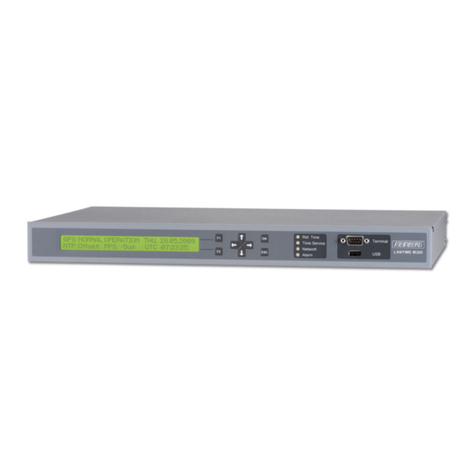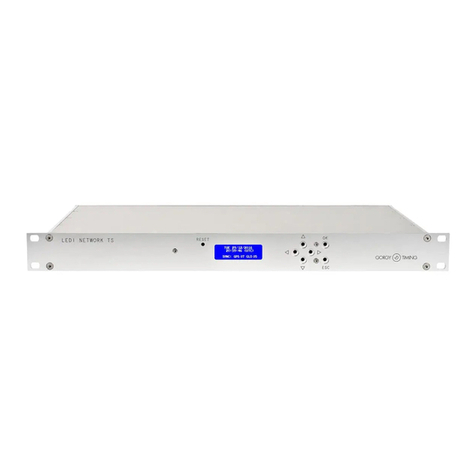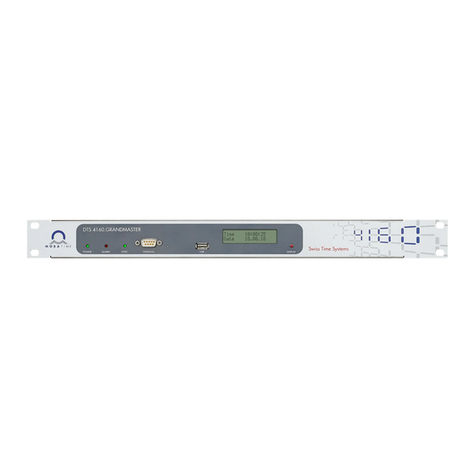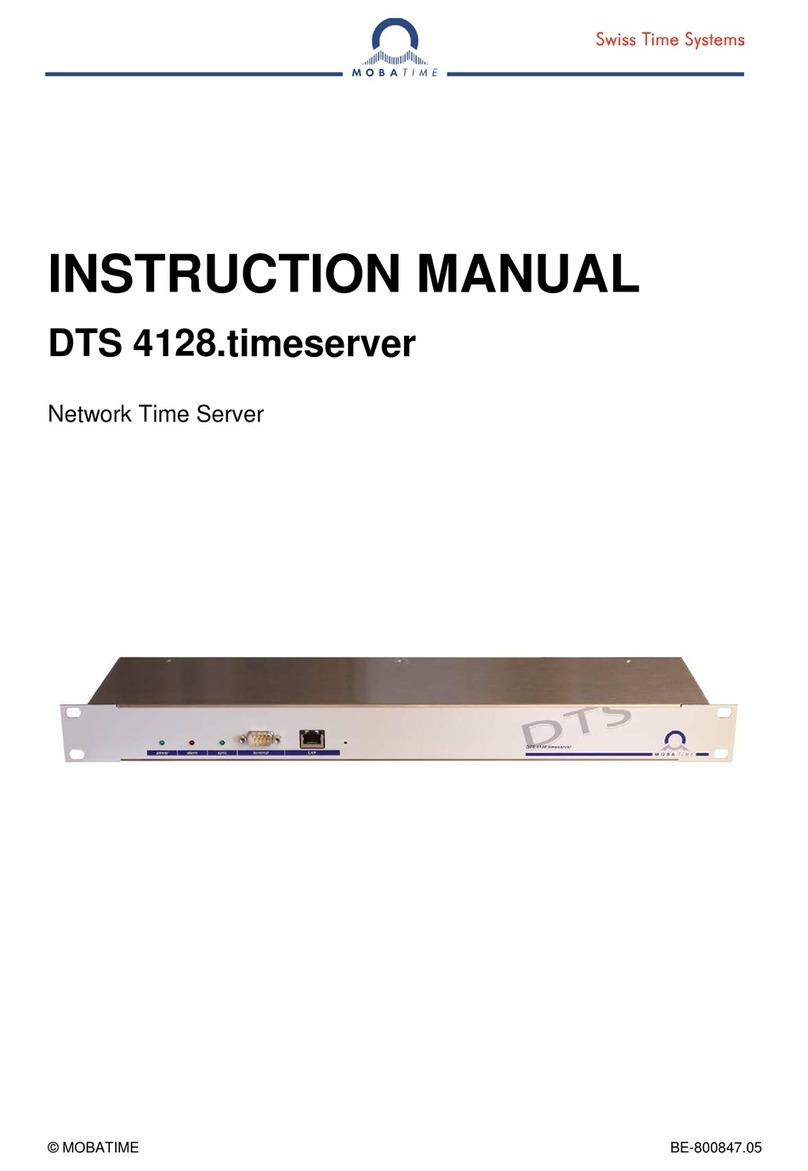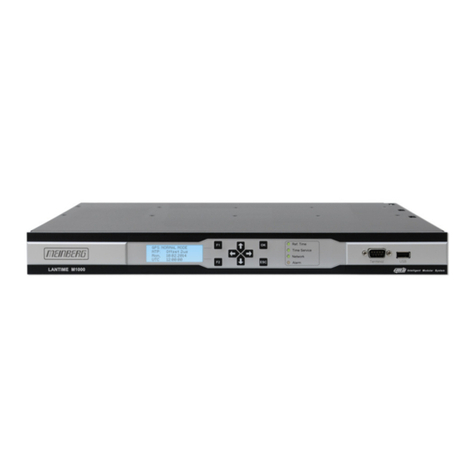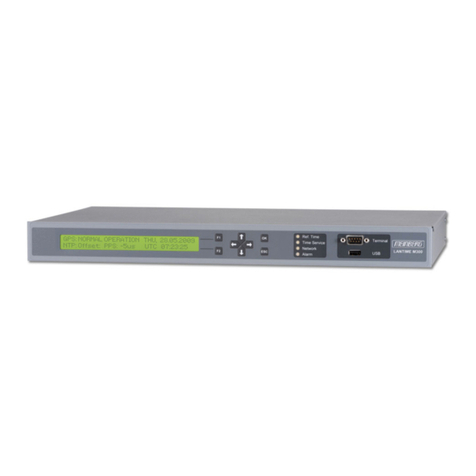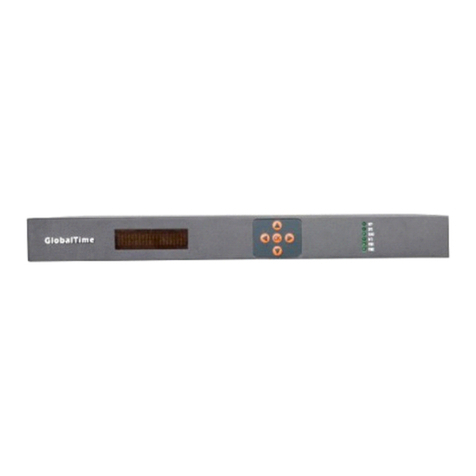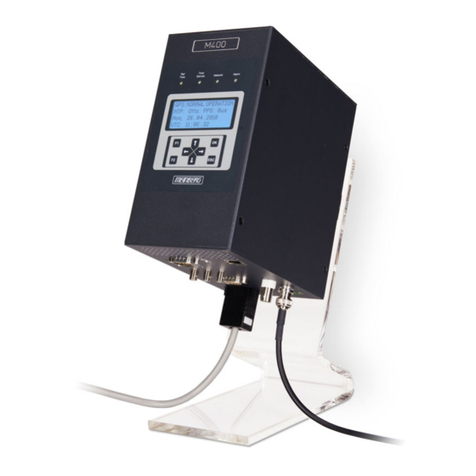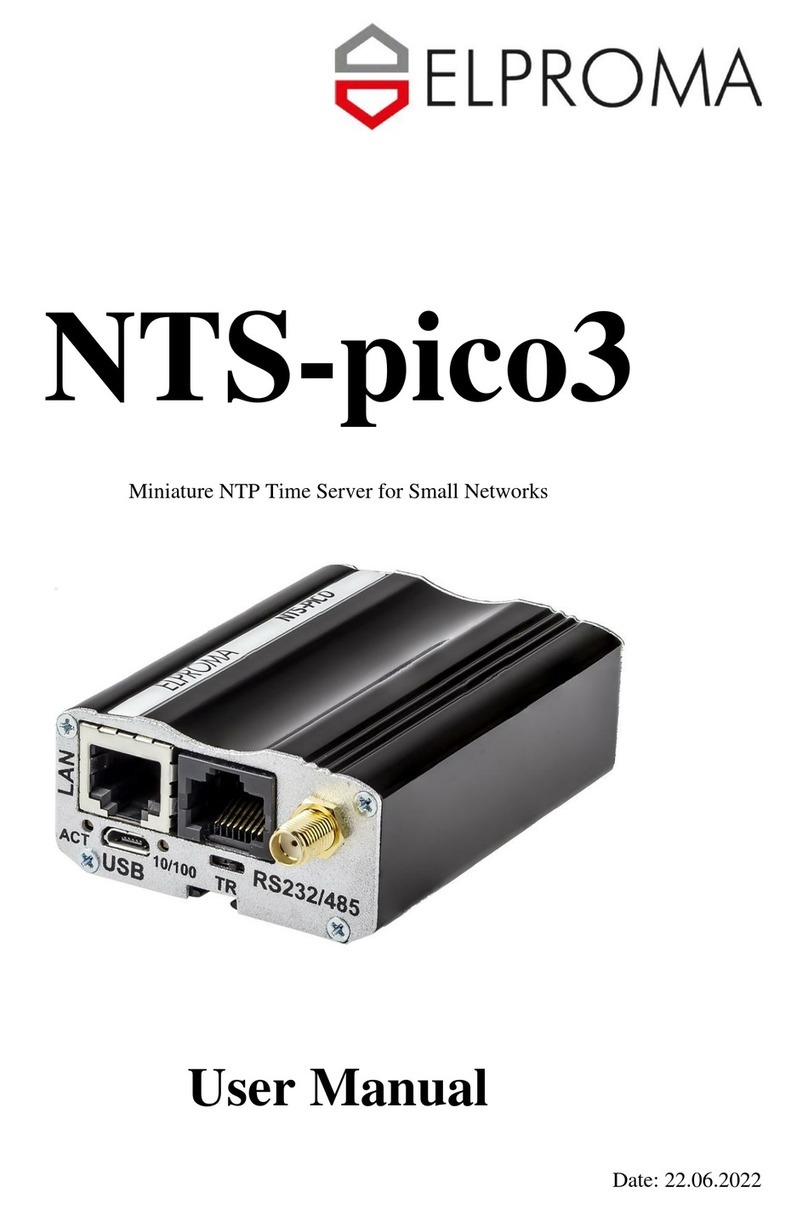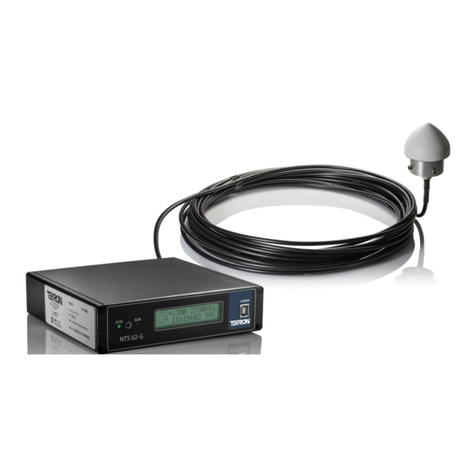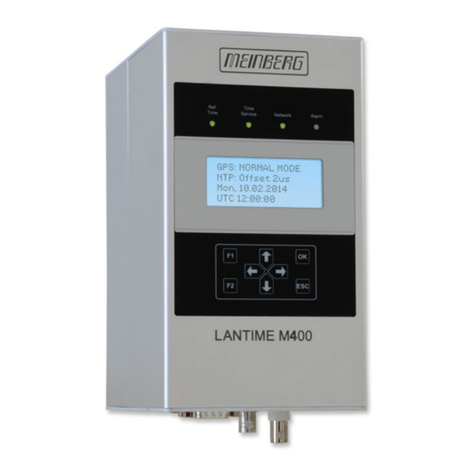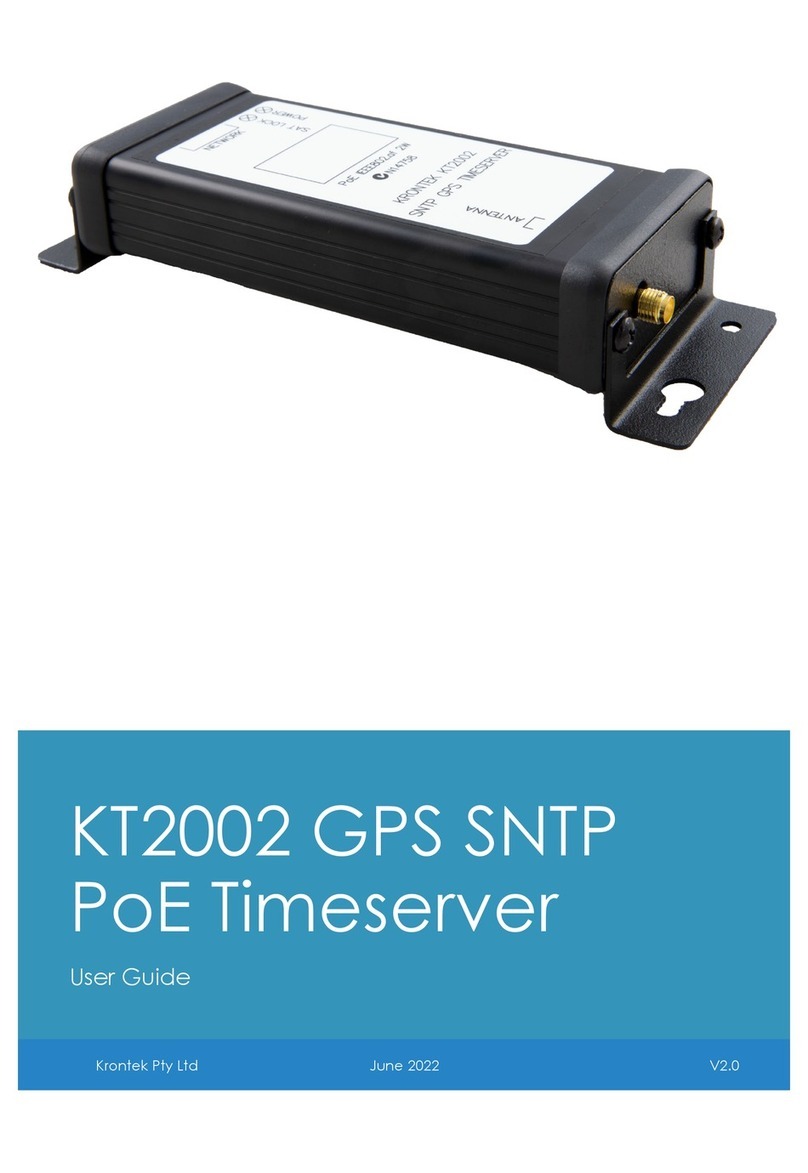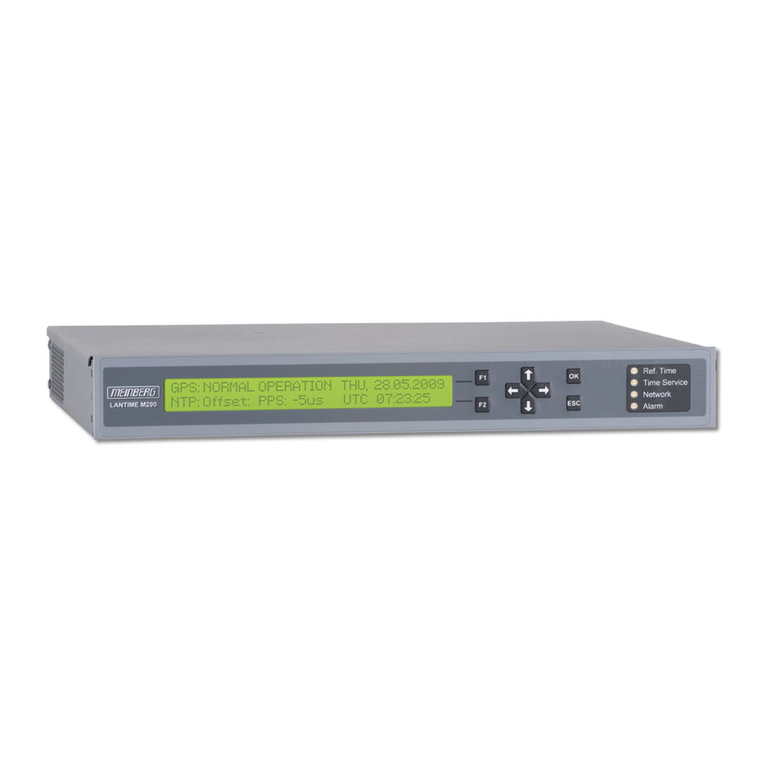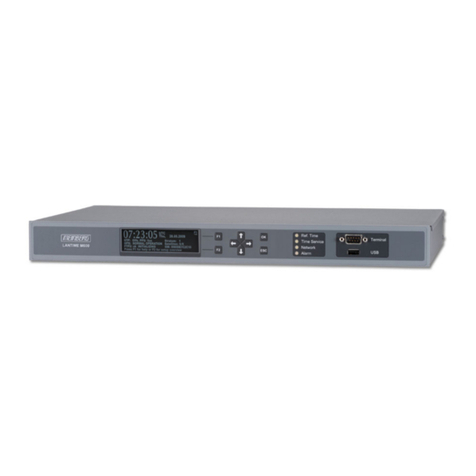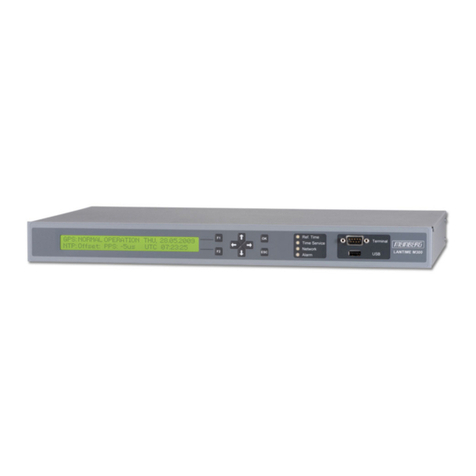Installation & Operation Manual TCC70XS
Page 4
2.2.1 Status Monitor by Ethernet 39
2.2.2 Status Monitor by USB 39
3THE ETHERNET MODULE 40
3.1 OVERVIEW OF FUNCTIONS 40
3.2 THE INDIVIDUAL FUNCTIONS 41
3.2.1 Add User: Enter a New User with Password 41
3.2.2 Modify User: Change a Password 41
3.2.3 Delete User: Delete User and Password 41
3.2.4 Version: Information about Status of Hardware and Firmware 42
3.2.5 Buffered Real–Time Clock 42
3.2.6 SNMP Functionality 43
3.2.6.1 Create a MIB File 43
3.2.6.2 Configuration Page “SNMP” 45
3.2.7 NTP Client 46
3.2.8 NTP Server 48
3.2.8.1 General and Configuration 48
3.2.8.2 Handling a Leap Second 50
3.2.8.3 NTP Status and Troubleshooting 51
3.2.9 System: Name, Log File, and Ethernet Status 53
3.2.10 Configuration Page “Front Panel“: Brightness and Screen Saver 54
4THE 3G–VIDEO MODULE: VIDEO AND TIME CODE 55
4.1 OVERVIEW OF STANDARD FEATURES 55
4.1.1 Standard Features of the Time Code Generator 55
4.1.2 The REAL–TIME Mode of the Time Code Generator 57
4.1.2.1 The Principle 57
4.1.2.2 Handling of a Leap Second 58
4.1.2.3 Handling of a DST Switching 59
4.1.2.4 Time Code and Video Locked to a Real–Time Reference 60
4.1.3 The FREE Mode of the Time Code Generator 61
4.1.4 The START Mode of the Time Code Generator 62
4.1.5 Standard Features of the Time Code Reader 63
4.1.6 The JAM SYNC Method of Operation 64
4.1.7 Standard Features of the Video Channel 67
4.1.8 Standard Features of the Character Inserter 68
4.1.9 Other Standard Features 69
4.2 THE STATUS MONITOR 70
4.2.1 Status “System“ 70
4.2.2 Status “Time and Date“ 73
4.2.3 Troubleshooting Regarding Real–Time Reference 75
4.3 CONFIGURATION 77
4.3.1 General 77
